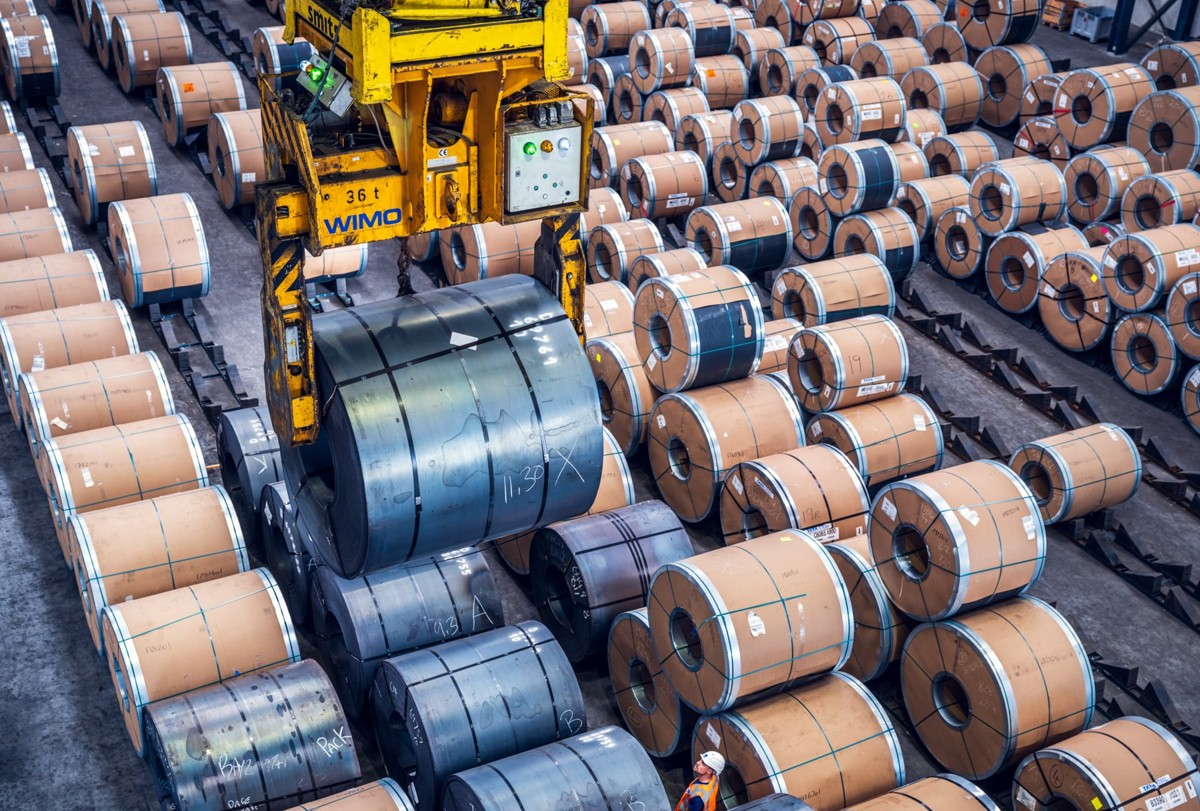Plate

August 12, 2022
June Import Share of US Sheet and Plate Markets
Written by David Schollaert
Imported sheet and plate products arrived at US ports at a higher clip in June, resulting in them accounting for a larger share of the domestic market, according to US Commerce Department data.
Imports’ share of US sheet and plate markets peaked in December, with sheet reaching its highest level in the past 4.5 years. The trend was driven by the need for buyers to find relief from inflated domestic steel prices. As the market slowed at year-end, so did imports. Since then, the arrival of foreign material has ebbed and flowed. June’s totals were up, near, or above recent highs.
Imports’ share of total sheet shipments into the US was 20.2% in June, up from 15.7% in May and the highest percentage share in five years. The increase was driven by a 28.5% surge in foreign sheet while domestic shipments shrank by 5.2%. The market share of plate product imports also rose in June, to 23.3% from 20.5% the month prior.
June’s sheet imports totaled 988,414 tons, up from 769,371 tons in May, and the second highest monthly total year-to-date.
Overall sheet product shipments (domestic shipments plus imports) were up marginally in June, 0.1% above May’s total. They totaled 4.893 million tons in June, fractionally higher than the 4.891 million tons in May, and were driven by a 219,043-ton increase in foreign sheet while domestic shipments tumbled.
Though overall sheet product shipments were largely sideways, hot-rolled coil (HRC) imports rose month-on-month (MoM) in June and totaled 234,387 tons versus 212,978 tons in May, a 10.1% MoM increase. Domestic shipments of HRC were down 6.3% or 110,475 tons less MoM. The details are below in Figure 1.
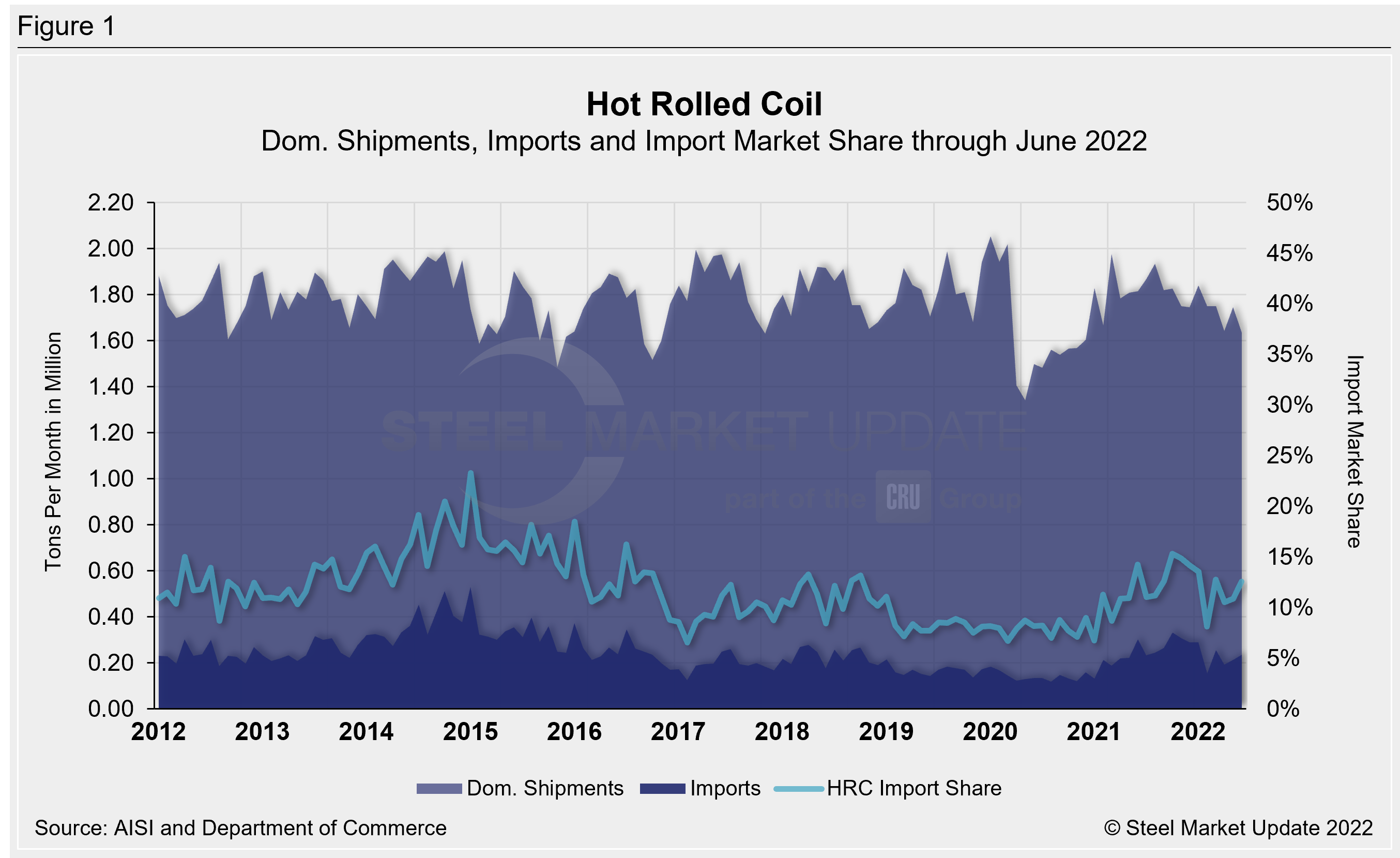
The import share of HRC rose 1.7 percentage points to 12.5% in June, a historically healthy share but below the recent high of 15.3% set last October. The increased share was driven by a stronger rise in foreign material, while domestic shipments shrank MoM. HRC apparent supply totaled 1.87 million tons in June, down from 1.95 million tons the month prior.
Imports of cold-rolled coil (CRC) were down 0.7% in June, while galvanized (hot dipped and electrolytic), and other metallic coat (OMC) were both up. Galvanized saw the greater percentage increase, up a whopping 79.6% MoM followed by OMC up 16%.
Plate products in June saw an overall increase in shipments as apparent supply rose by 9.7% MoM. The increase was driven by a gain of 5.8% in domestic shipments, while plate imports jumped by 24.9%. June plate imports of 197,602 tons were the highest total in nearly four years. All told, total plate shipments, including foreign and domestic, were 847,936 tons in June, up from 773,141 tons the month prior.
The import market share for plates in coil rose to 44.7% in June, a 0.7 percentage point increase MoM. The growth in market share was limited because of a 24.8% jump in domestic shipments, even though imports also grew by 28.1% MoM. Total imports of plates in coil were 158,420 tons in June, up from May’s 123,689 tons.
The table below displays the total supply to the market in three months and 12 months through June 2022 for sheet and plate products and six subcategories. Supply to the market is the total of domestic mill shipments plus imports. It shows imports on the same three- and 12-month basis and then calculates import market share for the two time periods for six products. Finally, it subtracts the 12-month share from the three-month share and color codes the resulting green or red according to gains or losses. If the result is positive, it means that the import share is increasing, and the code is red.
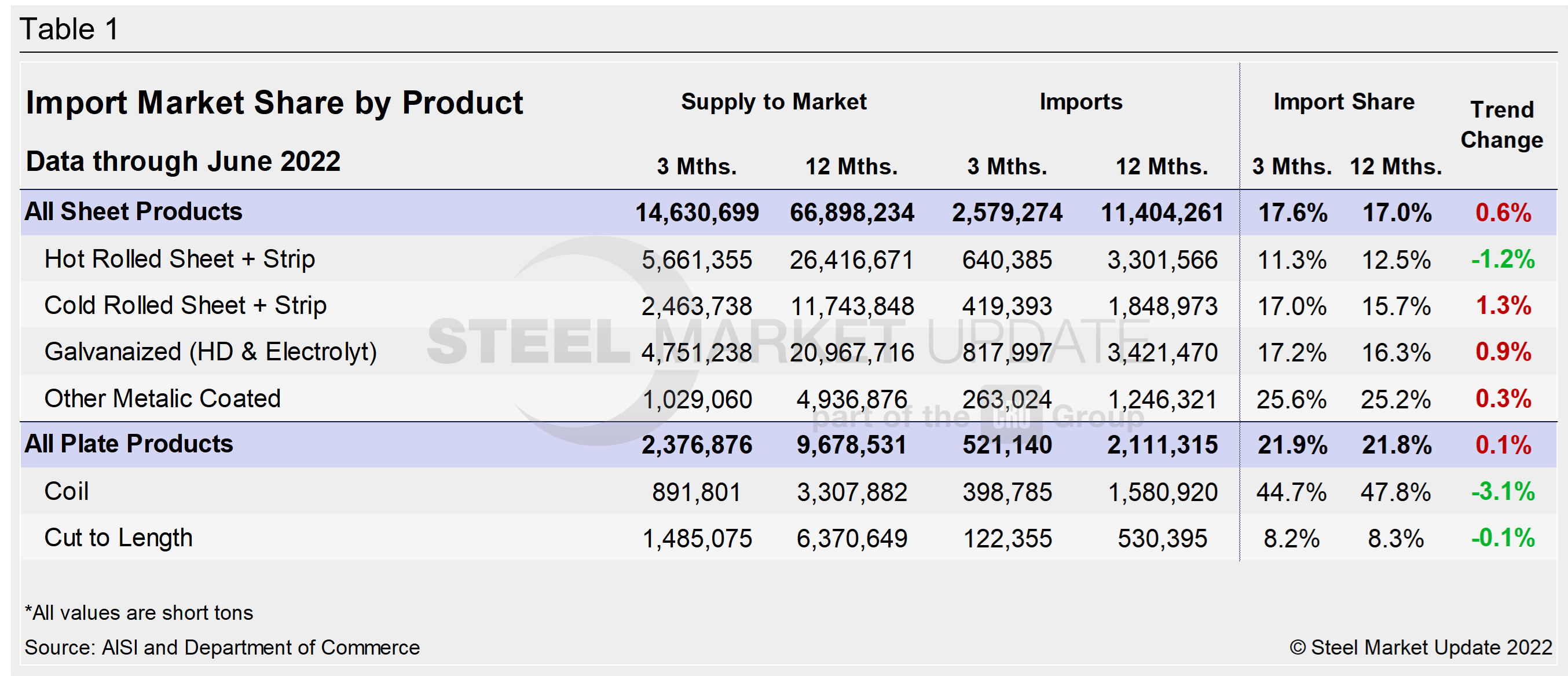
The big picture is that imports’ share of US sheet and plate sales grew in June after tumbling for two straight months in April and May. The big second-half jump in total imports was the result of historically and disproportionately high domestic steel prices. The influx of foreign material had been declining, coinciding with lower domestic prices. The war in Ukraine shifted that dynamic, pushing prices higher, and foreign steel quickly arrived at US ports again.
Hot-rolled and cold-rolled sheet and strip have seen a trend shift along with plate products, illustrating how import competition is impacting domestic products in three months compared to 12 months. The most notable of those subcategories is HRC and plate in coil, which have both seen declining import market shares through June.
The import market share of individual plate products as well as a breakdown of the market share for plates in coil are displayed together in Figure 2. The historical import market share of plate and sheet products, and the import market share of the four major sheet products, are shown side-by-side in Figure 3.
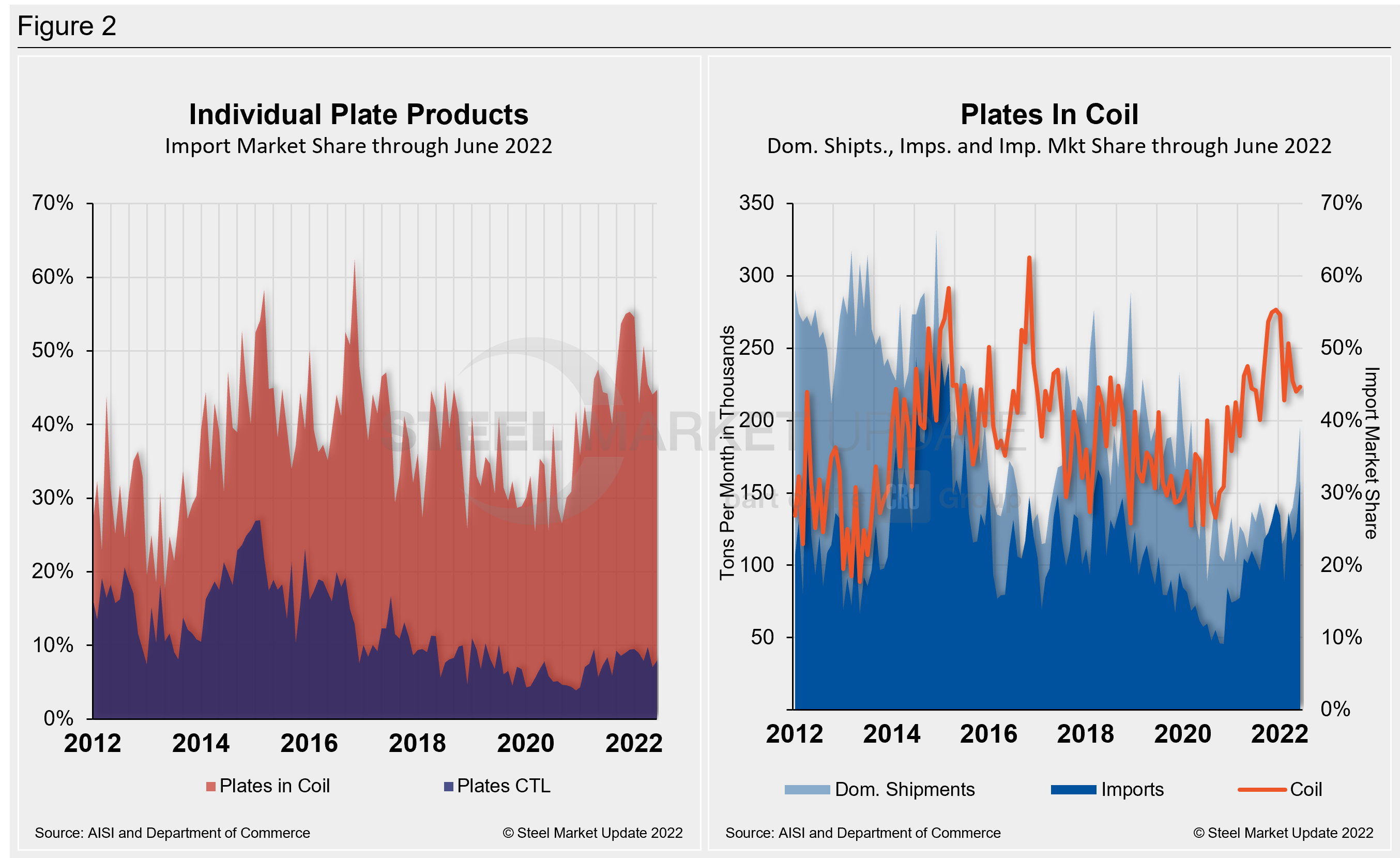
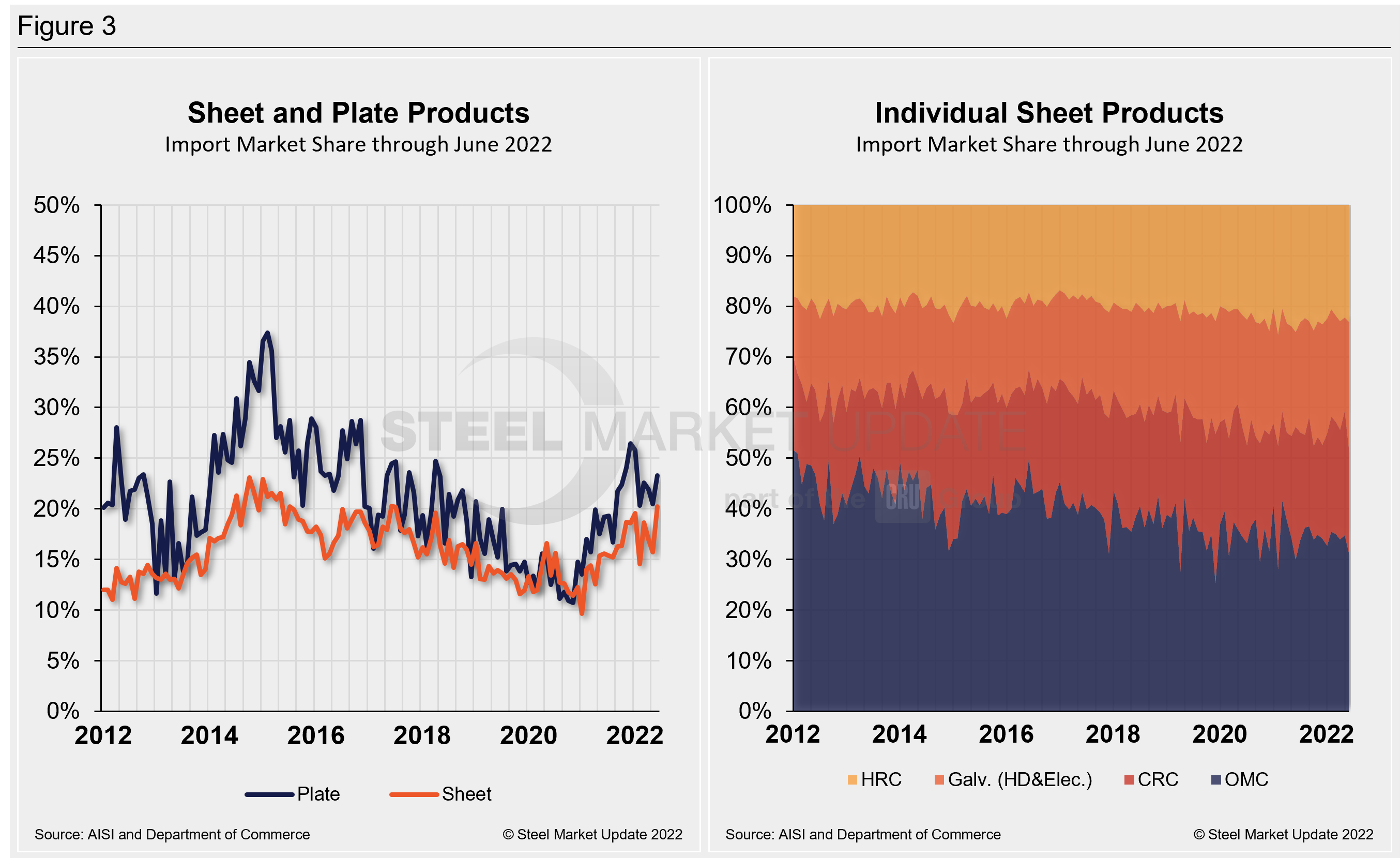
By David Schollaert, David@SteelMarketUpdate.com




